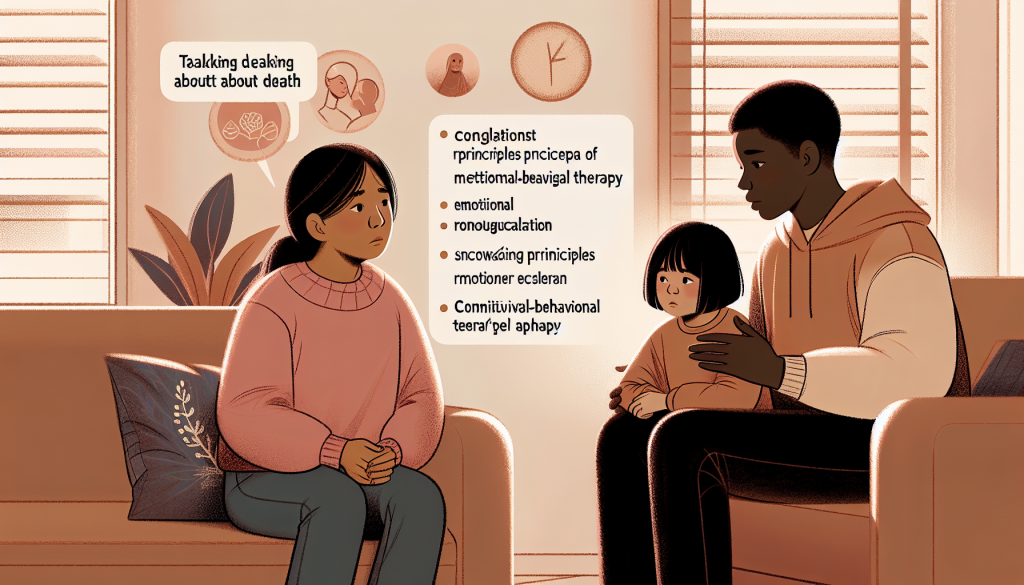“`html
How to Talk to Your Child About Death
Introduction: Why Talking About Death Is Important
Death is one of the most challenging topics to discuss with children. It’s natural for parents to feel uncertain about how to approach this sensitive subject. However, avoiding the topic can leave children feeling confused, scared, or even misunderstood.
Talking about death with children in an open and age-appropriate way is critical to helping them process loss, build emotional resilience, and develop a healthy understanding of life’s realities. This guide will provide you with practical parenting advice to navigate this difficult conversation.
Main Points: Understanding How Children See Death
Every child’s understanding of death depends on their age, developmental stage, and life experiences. Recognizing where your child is cognitively and emotionally will help you tailor your approach. Below are some considerations based on age groups:
1. Preschoolers (Ages 3-5)
Children in this age group often see death as temporary or reversible, much like in cartoons where characters come back to life. They may not grasp the permanence of death and may ask repetitive questions as they try to understand.
2. School-Aged Children (Ages 6-12)
By this stage, children begin to comprehend that death is permanent and happens to everyone, including themselves. This realization can trigger anxiety or fear, so it’s crucial to provide reassurance and a sense of safety.
3. Teenagers (Ages 13+)
Adolescents have a more mature understanding of death and may start to grapple with existential questions. They might seek deeper conversations about the meaning of life and death, and they may express their emotions more privately.
The Role of Cognitive-Behavioral Therapy (CBT)
Incorporating principles of cognitive-behavioral therapy can be especially helpful during these conversations. CBT emphasizes addressing irrational fears, promoting emotional regulation, and reinforcing a child’s sense of safety and autonomy. For instance, you can reassure your child that it’s okay to feel scared or sad, while also helping them recognize that their emotions are normal and manageable.
Practical Recommendations: How to Talk About Death
Now that we’ve covered developmental considerations, let’s dive into some actionable strategies for talking about death with children.
1. Use Simple and Honest Language
Avoid euphemisms like “passed away” or “gone to sleep,” which can confuse younger children. Instead, use clear and honest language such as “died” or “death.” For example, you might say, “Grandma died because she was very old, and her body stopped working.”
2. Validate Their Emotions
Children may feel sadness, fear, anger, or even guilt. Let them know that all their feelings are valid. For instance, you could say, “It’s okay to feel sad and cry. I feel sad too because I miss Grandma.”
3. Encourage Questions
Allow your child to ask questions—even the tough ones. If you don’t know the answer, it’s okay to admit it. Saying, “That’s a good question. I’m not sure, but we can figure it out together,” shows honesty and openness.
4. Provide Reassurance
Reassure your child about their own safety and the safety of their loved ones. For instance, you might say, “I know you’re worried, but I’m here to take care of you, and we’re all safe right now.”
5. Be Mindful of Your Own Emotions
Children often take emotional cues from their parents. It’s okay to show your feelings, but try to model healthy ways of coping. For example, you could say, “I feel sad too, so I’m going to sit quietly for a while and think about the good memories.”
6. Use Stories and Books
Reading age-appropriate books about death can help children understand and process their feelings. Check out our list of recommended books about grief and loss for inspiration.
7. Honor the Memory of Loved Ones
Encourage your child to remember the person who died in meaningful ways, such as creating a memory box, drawing pictures, or sharing stories. Rituals like these can provide a sense of closure and connection.
Conclusion: Building Emotional Resilience
Navigating difficult conversations about death with your child can feel overwhelming, but it’s an essential part of parenting. By approaching the topic with honesty, compassion, and age-appropriate language, you can help your child process their emotions and build emotional resilience.
Remember, every child is different, and there’s no one-size-fits-all approach. Be patient, listen actively, and provide the support your child needs. For more expert parenting advice, explore our resources on helping children navigate life’s challenges.
“`

